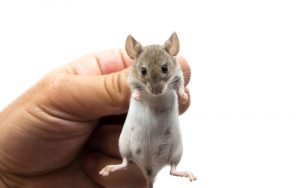Trapping Mice with Glue Boards – Advice From the Pros
By Chris Williams on December 26, 2011.
You’re going to try to trap mice in your home. Should you buy snap traps or glue boards (sometimes called sticky traps)? Glue boards are convenient—the whole thing is disposed of, mouse and all. With snap traps, you’re usually disposing of the mouse and keeping the trap for re-use. Like snap traps, glue boards are nontoxic; you’re not using any poisons.
Glue boards or glue traps are composed of a plastic or cardboard tray covered with a tenacious glue that holds a mouse once it touches the glue. Glue boards come in mouse and rat sizes. Don’t think that bigger is better. If you’re trapping mice, get mouse-size glue boards. Some glue boards can be folded to provide a tent-like tube or a cover. Some glue boards come prebaited with a food scent, or you can place a food bait, such as peanut butter, in the center of the trap.
When a mouse touches a glue board, it becomes stuck and further entangles itself as it struggles to get free. Eventually the mouse gets its nose stuck in the glue and smothers, or it may slowly die of dehydration or starvation. This can be a slow and noisy process and can understandably bother some people. Snap traps sometimes do not kill the mouse immediately either, but it is a less common occurrence than with glue boards. Putting the glue board inside a tamper-resistant bait station* means you don’t have to see it or the dead mouse until disposal.
 Even if the sight of a struggling mouse doesn’t bother you, you’ll still want to use a tamper-resistant bait station to hold the glue board if you have children or pets. Both can and do get stuck on glue boards when they touch them. There can be a resulting panic but you can free the individual by pouring cooking oil or baby oil on the stuck part. The oil dissolves the glue but it takes a few minutes. Lacquer thinner can remove the residue.
Even if the sight of a struggling mouse doesn’t bother you, you’ll still want to use a tamper-resistant bait station to hold the glue board if you have children or pets. Both can and do get stuck on glue boards when they touch them. There can be a resulting panic but you can free the individual by pouring cooking oil or baby oil on the stuck part. The oil dissolves the glue but it takes a few minutes. Lacquer thinner can remove the residue.
Place glue boards in the same places you would place snap traps for mice—along walls and next to droppings, nest material, or gnawing damage, or near areas where you know they have been feeding. You can cut cardboard glue boards to fit in tight spots. Don’t place glue boards in direct sunlight, or near an open flame like a gas hot water heater, or on hot pipes.
If you think that you’d rather not mess with trapping mice at all, call Colonial. We’ll design a humane pest management program specifically for your mouse problem. We do pests so you don’t have to!
*A tamper-resistant bait station is a plastic or metal box used to hold rodent bait or traps, and designed so that children and pets can’t get into the box. There is an opening where mice can enter but interior baffles keep a child from reaching inside. The station lid is lockable and the station can be anchored so that it can’t be picked up. If you’re not worried about children touching the glue boards, you can use a less secure cardboard bait station. Covering the glue board like this actually entices the mice who like to enter dark spaces.